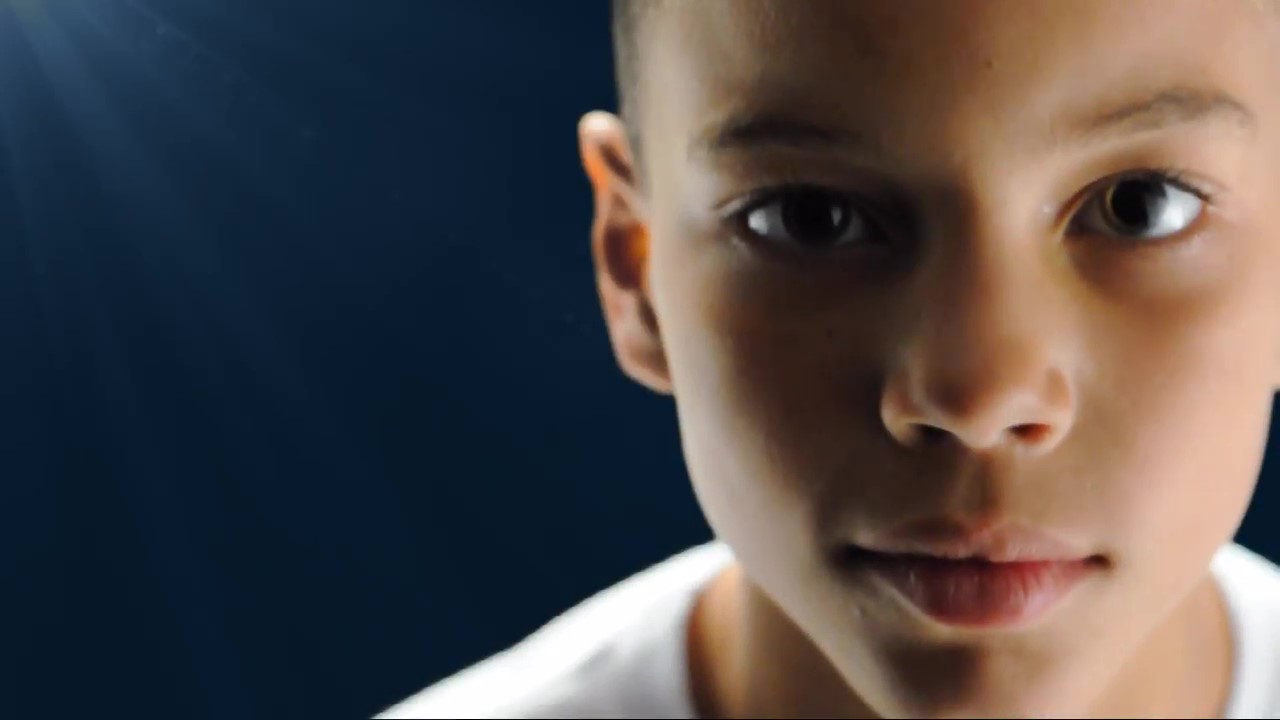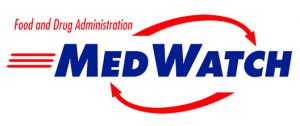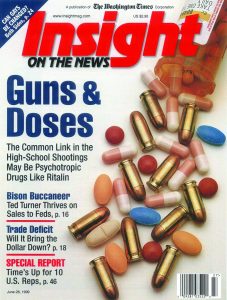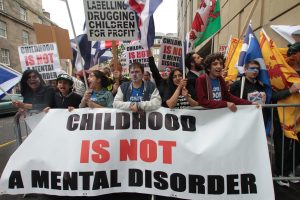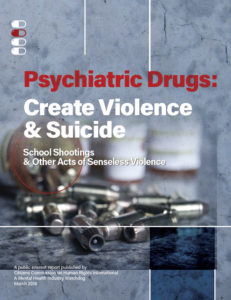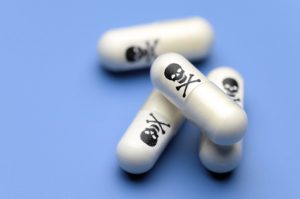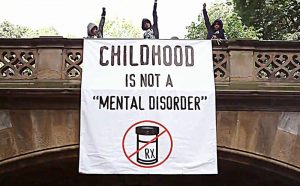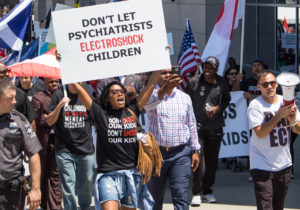The mental health industry watchdog, CCHR, celebrates its 20-year Fight For Kids campaign for children’s rights against psychiatric labeling and drugging, the decline in children prescribed psychotropic drugs, and other protections
By CCHR International
The Mental Health Industry Watchdog
November 7, 2022
November marks the 20th anniversary of the Fight For Kids (FFK) campaign launched by the mental health industry watchdog Citizens Commission on Human Rights International (CCHR)—the longest-running campaign against coercive psychiatric treatment, including drugging of children in U.S. history. In 2002, CCHR documented how parents were being forced to give their children psychiatric drugs as a condition of attending school or else face charges of medical neglect. CCHR took the issue to state and federal levels, testifying before legislatures and obtaining Congressional hearings into the issue. As a direct result of this public awareness campaign, there are now 16 state laws and the federal Prohibition on Mandatory Medication amendment, which in some way prohibit the forced or coercive drugging of children, especially through schools.[1]
Prior to 2002, there were about 8 million American children on psychiatric drugs. Children 5 years old and younger had become the fastest-growing segment of the non-adult population prescribed antidepressants.[2] The drugging of children with stimulants was so abusive that a Michigan legislator called Ritalin use among schoolchildren “a cultural practice.” Children were expected to “Say No to Drugs” but “Yes” to Ritalin—a prescription drug the Drug Enforcement Administration says is more potent than cocaine.[3] They were prescribed it for Attention Deficit Hyperactivity Disorder (ADHD), for which there is not a single medical test to confirm its validity as a “disease” or “disorder” and for which psychiatrists could not establish any etiology.
It was pivotal, then, that a “Fight For Kids” campaign be launched to protect children from coercive psychiatric labeling, drugging and electroshock. This spanned many areas, including the education, foster care, and juvenile detention systems.
There have been significant billions of dollars spent on the advertising and marketing of psychotropic drugs, for which a return is expected of increased numbers of children and adolescents taking drugs that can have serious adverse effects, including suicide and violence.
Against this vested interest monopoly, from CCHR’s headquarters in Los Angeles, the FFK campaign has worked on issues that have helped scores of parents.
Actions have included:
- Helped bring about a decline of more than 2.2 million children ages 0-17 subjected to psychiatric drugs since 2013, of which 1,248,919 were those taking “ADHD” stimulants.
- Warned states about the electroshocking (ECT) of children ages 5 and younger. Six of 10 states identified have now stopped this brutal practice. (CCHR continues to work to have all ECT prohibited no matter the age.)
- Joined parents, doctors, and attorneys in successfully pressuring the Food and Drug Administration (FDA) to issue stringent “black box” warnings that antidepressants can cause suicidal thoughts and actions in children, teens, and young adults.
- Helped agitate for and obtain similar serious warnings about stimulant drug adverse effects.
- Worked with media to expose the link between psychiatric drugs and violence and suicide, documenting dozens of school shootings where the teen shooters were taking or withdrawing from psychiatric drugs at the time. (Psychiatric drug withdrawal is also linked to hostile behavior.)
- Today, there are 71 international drug agency regulatory warnings of psychiatric drugs linked to self-harm, suicide, or suicidal ideation, and 43 reporting violence, mania, psychosis, hostility, aggression, or homicidal ideation.
- Provided language for FDA reform in 2008 that made it mandatory for all pharmaceutical print ads to advise patients to report drug adverse reactions directly to the FDA’s MedWatch system. Following the first ads being published, the number of Adverse Drug Reports (ADRs) to the FDA increased by 37%. As such, it was a contributor towards more ADR reports being filed—which has quadrupled in recent years.
- Contributed to the nationwide push against antipsychotic drugging of children, especially those in foster care, by helping to raise awareness about this tragedy through Congressional visits demanding oversight. By 2014, 31 states reported having instituted such oversight.
- Helped obtain six state laws prohibiting Child Protective Services from forcing parents or foster parents to drug children, which stopped CPS from the astounding practice of filing criminal charges against parents who refused to drug their child, claiming it was “medical neglect.”
Since 2015, provided more than 7,000 state legislators each year with educational information on electroshock treatment abuse; school shooters influenced by psychiatric drugs known to induce violent and suicidal behavior; and the restraint and sexual abuse of children in for-profit psychiatric facilities, now referred to as “the troubled teen industry,” calling for criminal accountability. Legislators have responded to alarming reports of child abuse.
As former Congressman Dan Burton stated:
“CCHR is a shining example of what people can accomplish in a free society. Through united action, effective education, and advocacy, CCHR has helped to bring about critically needed healthcare reforms that make our society and country a better place.”
- In 2002, the first lawsuit was filed over a young boy being forced to take psychotropic drugs through his New York school. It set the stage for parents to join together to form ABLECHILD.org in 2003 which has worked closely with CCHR on the need to use educational solutions in schools—not psychiatric screening, drugs, and programs.
Of this time, Sheila Matthews, Vice President of ABLECHILD, said:
“CCHR’s value to the legislators and Washington DC is unbelievable and it has to be done because children are dying and there has to be accountability. That’s what CCHR is doing—holding people accountable and trying to provide justice to the children who have been victimized by the psychiatric labels and drugs.”
- In 2002, award-winning journalist Kelley O’Meara wrote a series of ground-breaking articles for the Washington Times’ Insight Magazine. She had also been the first journalist to take CCHR’s evidence of psychiatric drugs being a causal point of violence, independently researched and confirmed this, and wrote a groundbreaking article “Guns & Doses.” She obtained permission from Insight Magazine for CCHR to reprint the article which was distributed to all state and federal legislators. Her subsequent book, Psyched Out: How Psychiatry Sells Mental Illness and Pushes Pills That Kill, is a must-read for all parents and policymakers.[4]
- The National Association for the Advancement of Colored People (NAACP) unanimously passed a Resolution against the Use of Psychotropic Drugs on Children and Teens, condemning the practice. More than a decade later it passed another supporting Resolution. Another July 2017 Resolution said the NAACP would work with advocates to “oppose the misdiagnosis and excessive prescription of psychotropic drugs for children” and called for Child, Family and Foster Care agencies and juvenile detention and probation systems to implement safeguards against the physical abuse and injury these drugs may cause.[5]
- A series of “round table conferences” were held at annual meetings of the National Foundation of Women Legislators (NFWL), garnering state support for protective laws. Between 2002 and 2004, NFLW passed several resolutions, including one for “Federal Protections Against the Psychiatric Labeling and Drugging of Children in Public Schools.”
- CCHR marched in the streets of major cities for children’s rights against psychiatric labeling and drugging. This included San Francisco, where the American Psychiatric Association (APA) was condemned in a boisterous demonstration outside its annual convention for failing to stop the practice of forced child drugging in schools and for psychiatrists objecting to a federal law protecting against this.
- While three state laws were enacted in 2001 protecting children against coercive drugging, this increased more than 430% after 2002 (when the FFK campaign was launched) to 16 laws by 2015. In 2004, the federal Prohibition on Mandatory Medication amendment was enacted, protecting all schoolchildren from forced drugging.
In response, Beth Clay, a former Senior Professional Staff member on the Subcommittee on Human Rights and Wellness in the Committee of Government Reform in the U.S. House of Representatives stated:
“It’s amazing how people in this country and around the world don’t understand how young and how often children are being given Schedule II psychotropic drugs…. CCHR has done a tremendous job in getting the word out about these abuses…. The most important impact CCHR has made was the increased awareness on Capitol Hill of this issue—that we are forcing medication through schools.”
Beverly Eakman, former President of the U.S. National Education Consortium and author of Cloning of the American Mind, pointed to the formidable obstacles that CCHR had to overcome:
“CCHR is the only organization that’s playing hardball against the psychiatric cartel. They were the first to seriously spearhead an actual movement against it. They have steadfastly insisted on the individual’s constitutional right to freedom of conscience and worked tirelessly to protect the rights of all parents to direct the education and upbringing of their children.”
- Mexico then followed in 2009 with a similar federal prohibition of enforced psychotropic drugging in schools, for which Mexico’s Committee of Science and Technology of the federal House of Representatives issued a commendation to “broadly recognize CCHR’s unprecedented fight in mankind’s history against psychiatric abuses, its protection of children from abusive practices and treatments and encourage CCHR’s humanitarian work.”
- One of the most stringent protective state laws was enacted in Florida in 2005. Together with medical and educational allies, CCHR testified before the Florida legislature. The law which was subsequently unanimously passed not only made it illegal to force parents to drug their school-age children as a punitive requirement for their education, but also prohibited the use of mental health tests, screenings, or questionnaires without parental consent—where previously a parent’s right to be informed and to choose had been usurped.
- In 2013, 8,389,034 children ages 0-17 were taking psychiatric drugs but by 2020, with awareness raised of these drugs’ risks, the number had dropped to 6,155,852—a decline of 2,233,182.
A U.S. Congressional Recognition applauded CCHR’s work, acknowledging CCHR “for its longstanding commitment to advancing the fundamental freedoms set forth in the Universal Declaration of Human Rights and the Nuremberg Code. CCHR serves as a stellar example of the united power of individuals who achieve reform through dedicated efforts to better society and effective education and advocacy. We recognize CCHR for the many great reforms it has championed, which today protect individuals against cruel, inhumane and degrading treatment and for its leadership role in raising public awareness so that dignity and human rights can be returned to all men.”
- Since the Columbine High School shooting in 1999, in which antidepressants were linked to the lethal violence committed (ringleader Eric Harris, 18, was taking an antidepressant), CCHR has embarked on a campaign to enlighten parents, educators, and legislators on this devastating connection. Every legislator in the country was sent a report on examples of such violence. Working with parents, attorneys, and members of Congress, it demanded the FDA issue strong warnings against antidepressants, stimulants, and other psychiatric drugs.
- In November 2002, Douglas Kennedy of FOX News exposed for the first time on national TV how prescribed psychotropic drugs cause violence and suicide. He reported that confidential drug company records showed Paxil was 8 times more likely to cause individuals to commit suicide than if taking a placebo. At the time, 7 out of the previous 12 school shooters had been on these types of drugs or withdrawing from them prior to them committing acts of violence.[6] The message resonated worldwide with CCHR chapters and in the community. By 2012, a leading psychiatrist and psychopharmacologist estimated that 90% of school shooters in the decade prior had been taking antidepressants.
Kennedy stated in 2015:
“Unfortunately, what these drugs do is they tell those really important emotions to ‘shut up.’ And when you shut those down, you lose a basic part of your humanity. Particularly, you lose a connection to yourself and you lose a connection to other people and you lose your vulnerability. You lose out, most importantly, on what is the essential human experience, which is love. If you can’t love all of that unattractive stuff, you’re not going to be able to love it in a child…and you have to do it, and that is the only way this stuff is going to change.” Further, “I really believe that the kind of service that CCHR does is the best kind of service…You’re telling them things they don’t want to hear, you’re making them feel things they don’t want to feel. To me, that is the greatest service you can give.”
- In February 2004, the first of several FDA Psychopharmacologic Drugs Advisory Committee hearings on antidepressants was held, at which parents of children who had committed or attempted suicide or homicide after a short time on antidepressants testified. CCHR assisted several of these parents, as it had at a similar FDA hearing it helped obtain in 1991, which had white-washed antidepressant risks. This time, the evidence could not be covered up or ignored and in September of that year, when CCHR assisted several people to testify in another FDA advisory panel hearing, the Committee recommended FDA’s strongest “black box warning” for suicidal effects be placed on antidepressant packaging information.[7]
- On October 15, the FDA conceded and a “black box” warning now alerts consumers that antidepressants could cause suicidal thoughts and actions in children and teenagers.[8]
- Not letting the matter rest there, two years later in December 2006, the Psychopharmacological Committee met again to hear testimony from about 75 people, including a CCHR representative, and the committee voted to extend the black box warning to age 24. The FDA did so.[9]
- Today, there are 630 international drug regulatory agency warnings about psychiatric drugs, of which 70 warn of self-harm, suicide, or suicidal ideation and 43 about violence, mania, psychosis, hostility, aggression, or homicidal ideation.
- The FFK campaign has strongly advocated warning parents of the risks of ADHD stimulants like Ritalin, Adderall, and Concerta. It was joined by doctors such as pediatric neurologist Dr. Fred Baughman Jr., who spoke with parents at public rallies CCHR held against falsely labeling children as “disordered.” In 2006, he published his acclaimed book, The ADHD Fraud: How Psychiatry Makes “Patients” of Normal Children.[10]
- In 2006, the FDA’s Drug Safety and Risk Management Advisory Committee held a hearing into stimulant drug risks. CCHR assisted several parents that testified, urging that the strongest warning be issued.[11] In 2007, the FDA directed “ADHD” drug manufacturers to distribute “patient-friendly” guides to consumers that state that stimulants could cause serious psychiatric and cardiovascular problems, including stroke, heart attack, sudden death, and psychotic reactions.
- CCHR International worked with its European CCHR counterparts in their efforts to raise awareness of this issue with The United Nations Committee on the Rights of the Child (CRC).[12] In 2005, the CRC issued a strong warning to governments that so-called ADHD and ADD were being misdiagnosed and therefore psychostimulant drugs were being “overprescribed,” despite the evidence of the harmful effects of these drugs.[13] The Committee also recommended, “other forms of management and treatment be used as much as possible to address these behavioral” issues.
Prof. Dr. Lothar Krappmann, former member of the UN Committee on the Rights of the Child, stated:
“CCHR provided solid, comprehensive and enlightening information on mental health issues with a strong focus on children…. The UN Committee paid much attention to children’s treatment with psychiatric drugs, in particular to the enormous increase of such medication in many countries not only in Europe. CCHR gives information on alternatives and insists on informed consent. This demonstrates that work of the CCHR is clearly child rights based. The chapters in a lot of countries have impact on the political debates and legislation.”
- ADHD Drug Decline: In 2013, 4,404,360 children and teens in the U.S. were taking ADHD drugs, which in 2020 decreased to 3,155,441—a decline of 1,248,919.
- Psych Drug Awareness & Reporting: In 2007-08, working with whistleblowers, parents, and consumer groups, CCHR was instrumental in helping to provide and secure language for the FDA reform bill which made it mandatory for all pharmaceutical print ads to advise patients to report drug adverse reactions directly to the FDA. Following the first ads being published, the number of Adverse Drug Reports to the FDA increased by 37%.[14] Between 2006 and 2016 estimated ADRS increased nearly 4x—from 470,261 to 1.8 million.[15]
- Childhood is Not a Mental Disorder: The launch of this campaign with a signature video released on YouTube reached more than 18 million viewers and was so inspirational that CCHR was asked for it to be translated into Spanish, adding over half a million more viewers. The message resonated and was repeated in other media stories of the plight of children being labeled and drugged. The responses to the PSA included:
- “I am a teacher, and I remember the class I had to take in “identifying” “special needs” students. It was all checklist stuff, especially the one for ADD or ADHD. A teacher can make a recommendation to have a child evaluated and I think we know the story from there. The sad thing is there are so many kids that are screwed for life because someone thinks they have a problem.”[16]
- “Thank you! I love this. My mother was a special needs teacher for over 40 years, uplifting kids who had individual needs without labeling them. She would warn against creating a self-fulfilling prophecy where kids do not reach their full potential because they had a belief that they would always fail because of being told there was something wrong with them, a disorder. Never in mankind’s history have kids been so sedentary, so it is no wonder that they have excess energy and less belief in what they can attain outside of their controlled environment, and often rebel.”
- “I was a victim of Psychiatric Labeling when I was a kid. [It] ruined my childhood. I was ignored, avoided, teased, and separated from the other kids. It happened so often that I lost my social skills from lack of interaction, which only made things worse.”
- Restraint Assault of Children Exposed: Since 1998, CCHR had been exposing the criminal abuse of children being lethally restrained in psychiatric facilities, but launched into greater action with the FFK campaign and a report “The Silent Death of America’s Children.” This was distributed to every state legislator calling for accountability for deaths and harm inflicted on children. Since 2015, over 16,000 alerts have been sent to legislators about the need for prohibiting restraint use and protecting children from this assault. Media has exposed restraint deaths; criminal prosecutions have occurred; other high-profile advocates have championed the cause and legislators in three states recently passed laws restricting restraint use.
- Every major company owning chains of for-profit behavioral and psychiatric facilities has been exposed, and since 2015, 71 facilities have closed in the wake of allegations of abuse and wrongful deaths, including of children.
- CCHR’s FFK work has enabled parents to prevent their children from being forced onto psychotropic drugs, to challenge schools, and to obtain legal representation to fight for their parental right to choose their child’s healthcare needs. Below is a small sample of grateful parents:
“I went online and started looking for any law that I could take to court and say you are violating my son’s rights as a human being. I found CCHR and emailed them and they called me back right away! Every single person I talked to at CCHR went so far above and beyond to help me, anything I needed they were there. I went back to court and I won!”[17] — Caroline, Mother
“I sincerely want to thank the people at CCHR for the opportunity to take full control of my daughter’s destiny, health and freedom. Words cannot describe the peace of mind you have given me, knowing there are people like you fighting for all of us. You saved my daughter’s life.” — Felix, Father
- Six state laws were obtained prohibiting Child Protective Services from also forcing parents or foster parents to drug their children.
- FFK also helped expose the use of dangerous antipsychotics on foster care youths, taking this issue up with Congressional senators as far back as 2011. It contributed to a nationwide concern about and reporting of antipsychotic drug abuse of children—62% of young children under Medicaid on antipsychotics were prescribed an antipsychotic by a psychiatrist. Only 39% received a non-drug service before being started on an antipsychotic.[18]
- States began to enact policy initiatives surrounding the prescribing of antipsychotics to young children insured by Medicaid (which includes foster care children). By 2014, 31 states had implemented prior authorization policies for antipsychotic prescribing to children enrolled in Medicaid. There began a decline in antipsychotic prescribing to this population.[19] Between 2010 and 2014, the state Medicaid peer-review program resulted in a 30.4% decrease in antipsychotic use across all age groups.[20] Further, in privately insured young children (2–7 years), prescription antipsychotic use declined from 2.9% (per 10,000) in 2009 to 0.17% by 2017. There were 8,035 young children in the 2–7 year age bracket who filled an antipsychotic prescription in 2009 and only 2,501 in 2017—a decline of 5,534 children.[21]
In 2017, Sonya Muhammad, a former counselor and social worker who worked in the Los Angeles foster care system stated that 10 years earlier:
“I was introduced to CCHR, who was the first to show interest regarding my concerns about the rampant psychotropic drugging of foster youth. I have always felt free to say in their presence, that I see these practices of administering dangerous drugs to children, as a careless, selfish, and criminal offense against precious young lives, which have no voice and no power.” The FFK actions are a “phenomenal effort to save the minds and lives of thousands of children both nationally and internationally. Thank you CCHR for your courage, commitment, your leadership, and diligence.”[22]
- Allison Folmar, Esq., a Detroit civil and human rights attorney fought and won the most publicized case against psychiatric-enforced drug abuse of a child when she helped a mother, Mary Anne Godboldo secure the release of her 12-year-old daughter from a psychiatric facility that Child Protective Services had forced her into—because she had refused to keep her child in a powerful antipsychotic, Risperdal. Maryanne faced S.W.A.T teams and Army tanks when she barricaded herself in her house, fighting to keep her child off Risperdal. CCHR provided information to attorneys on the serious risks of the drug that could be argued in court that no child should ever be forced onto it.
Allison responded to CCHR’s FFK actions:
“CCHR educates, empowers, and enlightens and has had our backs by providing necessary facts, statistics, and experts. I would not be adequately equipped to challenge the technicality of [psychiatric] misinformation without your support. These legal fights can’t be won without CCHR….”
“It was a fierce battle trying to free my son from the psychiatric facility. CCHR was the only group willing to help. Thanks to the staff at CCHR, my son is home.”[23] — Thomas, Father
- Mental Health Screening: Under the banner head of “Fight For Kids,” CCHR, parents, and whistleblowers exposed the dangers of mental health screening in schools, including the use of the TeenScreen “depression screening” program that had become a conduit for putting teens on antidepressants. TeenScreen’s subjective questions about “depression” meant there was an 84% “false-positive” rate—meaning teens were wrongly labeled as “depressed” and often drugged. Allen Jones, a former investigator with the Pennsylvania Office of the Inspector General and CCHR International Human Rights Award recipient, blew the whistle on TeenScreen, and wrote: “Consciously and instinctively we safeguard our children. TeenScreen is a bitter and cynical betrayal of this noble human impulse. Promoted as an aid to preventing suicide and identifying so-called mental disorders, TeenScreen is in fact a nefarious effort to recruit our children into the quagmire of biological psychiatry.” It was developed and promoted by persons with deep financial ties to makers of psychiatric drugs.”[24] In 2012, the corrupt and abusive mental health screening program shut down.[25]
Dr. Toby Watson, a clinical psychologist from Wisconsin, former Chief Psychologist for the Wisconsin Department of Corrections, and past Executive Director of the International Society of Ethical Psychology and Psychiatry (ISEPP), commented that CCHR “does incredible work fighting for not only our society and our children, but our children’s children.… I look forward to the day we stop diagnosing childhood as a mental illness.”[26]
- Banning Electroshock: While all electroshock treatment must be banned as a barbaric and harmful practice, the fact that toddlers were being given it was established through CCHR obtaining state statistics on ECT usage—often provided only in response to Freedom of Information requests. No collective publicly-accessible database on ECT usage and deaths exists in the U.S. In exposing this, legislators from 19 states condemned electroshock use on children and adolescents. The number of states reporting children ages five years or younger being subjected to electroshock has declined 60% (from 10 to 4) since approximately 2016. (The six states are Florida, Pennsylvania, Washington state, Illinois, Indiana, and Kentucky.)[27] Pennsylvania State Representative Stephen Kinsey succinctly put it: “The use of electroshock therapy on children is outright cruel and unacceptable.” This was supported by Rep. Tom Murt, who said, “it’s deplorable,” yet, “kids are still being shocked today. This treatment can cause brain damage. To me, it’s a form of child abuse.”[28] CCHR International assisted CCHR Australia in its groundbreaking Western Australian law that in 2014 not only banned the use of ECT on minors but also made it a criminal offense to administer it to those younger than 14 years old.
- In 2012, American psychiatry was complaining about the waning of ECT use in general.[29] And so it should continue—into oblivion. Electroshocking people’s problems is draconian, an assault, and has no place in today’s mental health system. The United Nations Human Rights Council and World Health Organization have both recommended an end to all coercive psychiatric treatment, including forced electroshock (ECT).
In 2017, U.S. Constitutional attorney Jonathon W. Emord, who challenged the FDA on its classification ruling for ECT devices, stated:
“ECT devices are a throw-back to an age of primitive torture, of ignorance and barbarism, where bludgeoning those with depression and psychoses into a lack of consciousness and awareness was considered therapeutic. This past year CCHR has done more than any other organization to fight against FDA’s indefensible proposal to make Electroshock Therapy devices far more available for psychiatric use, a move that would expand the horrors and compound the problems facing patients in need…. Electroshock must be banned.”[30]
As an ongoing part of the campaign, a Fight For Kids website, also available in Spanish, was produced to provide parents, teachers, and legislators with a resource on existing and needed protections against the psychiatric labeling and drugging/electroshocking of children.

[1] https://www.fightforkids.org/state-and-federal-laws-passed; https://www.fightforkids.org/impact
[2] Joyce Howard Price, “Antidepressant use by preschoolers rising,” The Washington Times, 3 Apr. 2004
[3] https://www.legislature.mi.gov/documents/2001-2002/billanalysis/House/htm/2001-HLA-5083-B.htm
[4] https://www.amazon.com/Psyched-Out-Psychiatry-Mental-Illness/dp/1425926614
[5] https://www.cchrint.org/2017/08/16/human-rights-watchdog-supports-naacp-resolutions/
[6] https://www.cchrint.org/about-us/cchr-accomplishments/
[7] Susan Stefan, Center for Public Representation, “Tort Litigation Against Pharmaceutical Companies Involving Psychiatric Drugs: Lessons for Attorneys and Advocates.”
[8] Jeanne Lenzer, “FDA panel urges “black box” warning for antidepressants,” British Medical Journal, 25 Sept. 2004, 329:702
[9] “U.S. agency asks antidepressant makers to warn young adults about suicide risks,” AP Wire, International Herald Tribune, 2 May 2007
[10] https://www.amazon.com/ADHD-Fraud-Psychiatry-Patients-Children/dp/1412064589
[11] “Warning Urged for ADHD Drugs,” Los Angeles Times, 10 Feb 2006
[12] UN Convention on the Rights of the Child, Committee on the Rights of the Child, “Main areas of concern and recommendations; Basic health and welfare,” points 42 & 43, 29 Jan. 2010
[13] “Considerations of reports under article 44 of the convention—Concluding observations: Finland,” UN Committee of the Rights of the Child, CRC/C/15/Add.272, 20 Oct. 2005, p. 7; “Considerations of reports under article 44 of the convention—Concluding observations: Denmark,” UN Committee of the Rights of the Child, CRC/C/DNK/CO/3, 25 Nov. 2005, p. 8
[14] https://www.cchrint.org/about-us/cchr-accomplishments/
[15] Improving Adverse Event Report Processing at the U.S. Food and Drug Administration, FDA, De. 2016
[16] https://www.youtube.com/watch?v=Wv49RFo1ckQ
[17] https://www.cchrint.org/because-of-you/
[18] https://www.ncbi.nlm.nih.gov/pmc/articles/PMC8055725/
[19] https://www.ncbi.nlm.nih.gov/pmc/articles/PMC8055725/
[20] https://ps.psychiatryonline.org/doi/10.1176/appi.ps.201700177
[21] https://www.ncbi.nlm.nih.gov/pmc/articles/PMC8055725/
[22] https://www.cchrint.org/2017/03/10/cchr-presents-human-rights-awards/
[23] https://www.cchrint.org/because-of-you/
[24] Allen Jones, “Teen Screen, Cynical Deception, Dangerous Illusion,” 26 Aug. 2009, https://www.cchrint.org/2009/08/26/teen-screen-cynical-deception-dangerous-illusion/
[25] https://www.cchrint.org/2012/11/27/teenscreen-shuts-down/
[26] https://www.google.com/search?client=firefox-b-1-d&q=T0by+Watson+wisconsin
[27] https://www.cchrint.org/2022/01/24/u-s-states-still-electroshocking-0-5-year-olds/
[28] https://www.pahouse.com/Kinsey/InTheNews/NewsRelease/?id=93621
[29] https://psychnews.psychiatryonline.org/doi/full/10.1176/pn.47.23.psychnews_47_23_23-a
[30] https://www.cchrint.org/2017/03/10/cchr-presents-human-rights-awards/


